Much of my covered bridge research has been what you might expect it would be. Lots of reading. Lots of scouring town records, rifling through vertical files at historical societies, reading books in libraries, deciphering engineering reports, and corresponding with stakeholders via email. Lots of documents. Lots of sitting around.
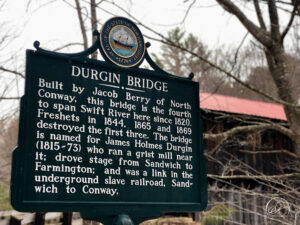
Visiting a covered bridge is not particularly helpful in ascertaining its history. Yes, a trained eye can identify structural and cosmetic updates and repairs, but bridges can only say so much. Sometimes there may be a state historical marker nearby with a sentence or two, but there is no historical brochure in a handy rack attached to the portal. Unlike many historic properties, there is no docent waiting to give you a tour, tell you stories, and ask you to sign the guestbook. You know the bridge has a story to tell, but it’s not talking.
In the summer of 2021, I emailed the Bath Historical Society to inquire about any archival materials they might share with me on their three covered bridges. This exchange had become rather routine by then. I would reach out, and a kind person at the historical society would either gather information and send it to me (some places were still closed because of the pandemic), or they would graciously invite me in to access their records. Either way, it was more reading and more sitting around.
This time, however, I received an unexpected reply.
“Archival? No. What I have are a laundry list of amazing/interesting stories on the bridge which most find very interesting. I would be happy to walk you through the bridge and tell you all the tales.”
Awesome.
On a hot August day, I met Craig Pursley at his art gallery on the Bath common, less than 100 yards from the Bath Village Bridge. Pursley not only works on one side of the bridge but lives on the other. He pointed out his home to me as we walked down the hill to the longest covered bridge completely within the boundaries of the state.
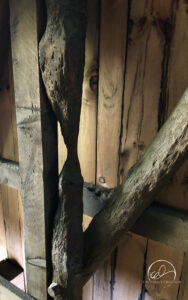
As we walked through the historic bridge, Pursley drew my attention to things that I might have easily missed – remnants of old advertising broadsides and posts that had been chewed straight through by tied-up horses. He shared generational legends and local folklore that I would not have found in any history books. He spoke of drunken revelers, nimble log drivers, and frightened circus elephants. He shared a story of a boy whose sister went out on a date with her paramour in a horse and buggy. The young lad hid high in the rafters until the unsuspecting couple came through the bridge; then, he jumped down in the back seat. Standing inside the bridge, looking up at the rafters, I could visualize the whole thing.
Pointing out the second window from the village on the downstream side, Pursley shared that this was once a popular portal for trash. It seems townspeople threw their discarded items right off the bridge, where they gathered on the rocks below. I looked down and tried to imagine a giant pile of rubbish just sitting there in the river. Fortunately, that practice ended but not before a fortuitous event occurred. It seems a bridge repairman accidentally fell off the roof while working on the bridge. He was unharmed because he fell on the pile.
These tales don’t exist in any annual reports or vertical files; they exist as oral tradition. Two hundred years of history live inside the Bath Bridge because of Pursley. He speaks for the bridge. He was the docent I’d been waiting for.
A few months later, as the fall tourist season came to a conclusion on a busy Columbus Day weekend, my husband and I found ourselves at the gift shop at Clark’s Bears. Callum Grant had agreed to meet us to allow access to Clark’s Bridge, one of only seven covered railroad bridges in the world and the only one still in active use. Photographing the bridge is challenging as one cannot just wander up to the bridge while a guest at Clark’s. Grant agreed to give us the backstage tour.
With our official lanyards around our necks, we followed Grant past the bear show arena and the climbing wall, through the Segway tours, and past the locomotives to the covered bridge. As I photographed the bridge from every angle, Grant shared stories with us about the bridge’s move from Vermont to the Trading Post, about the Clark Brothers and their vision of “green pastures for iron horses.” Then Grant walked us through the covered bridge, something that visitors surely cannot do, for a different perspective. It was there we met the infamous Wolfman.
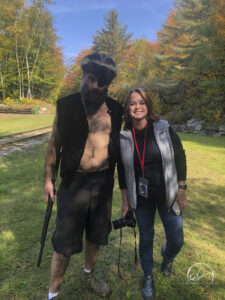
My first meeting with the Wolfman was as a young child riding the White Mountain Railroad around the Trading Post. One minute I was enjoying the peaceful train ride, and the next, a hairy man was riding alongside the train with a shotgun, yelling at us. It was jarring to say the least. Now, as a 52-year-old, I got to hide in the bushes while the Wolfman scared a new generation of kids. This time I wasn’t afraid.
Grant’s behind-the-scenes visit to Clark’s Bridge provided me with a much richer narrative. He kept us near the tracks until the train came through a second time, allowing for a unique photo opportunity of the last working wooden covered railroad bridge in the world. He shared stories of the Clark family and their genuine love for the bears. He showed us where the beloved bears are buried, each with touching tributes on their tombstones, Here Lies my Friend Jasper, Show Bear, Sans Egal, 1961-1988, W. M. Clark. (“Sans Egal” is French for “unparalleled” if you weren’t teary-eyed already.)
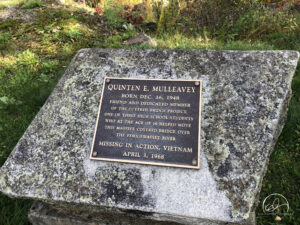
Grant pointed out a small granite marker to the right of the bridge portal, something train passengers would not have time to register on their journey through the bridge. The marker honors a young man named Quinten E. Mulleavey, who, at age 16, worked alongside the Clarks to reconstruct the covered bridge. Three years later, Mulleavey went to Vietnam and never came home. The Clarks, and their beloved bridge, are still waiting for him.

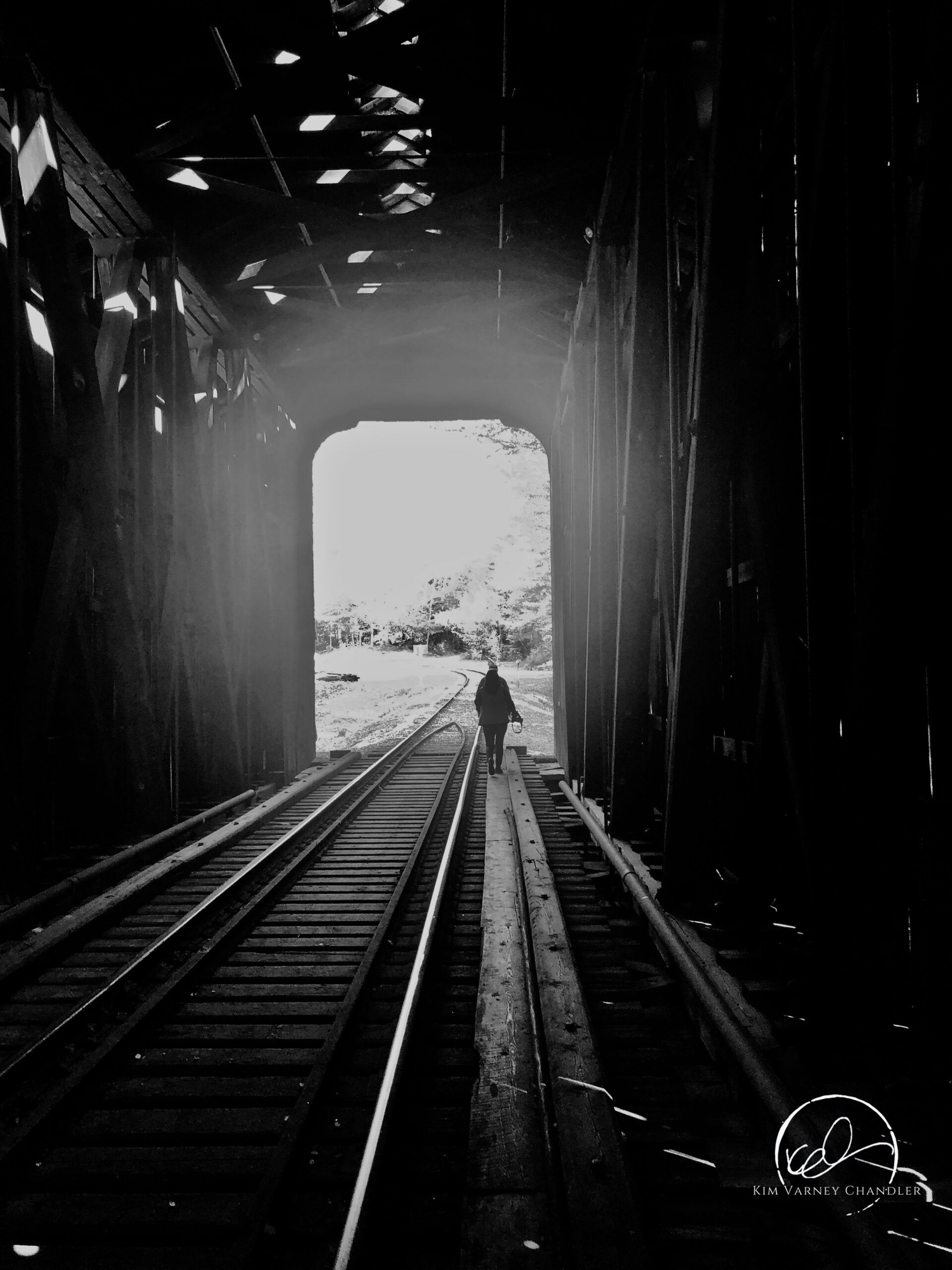
Leave a Reply